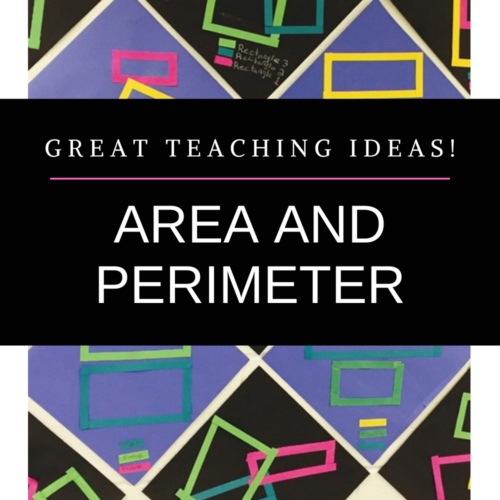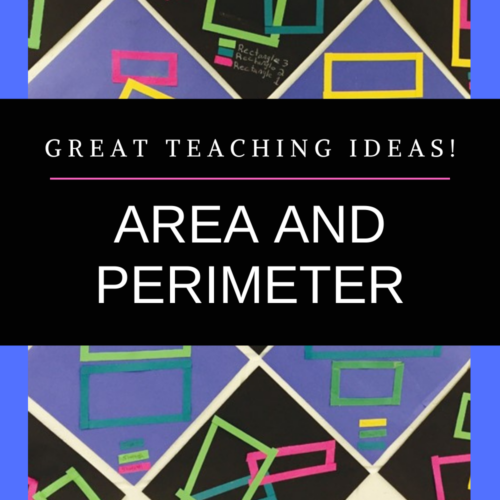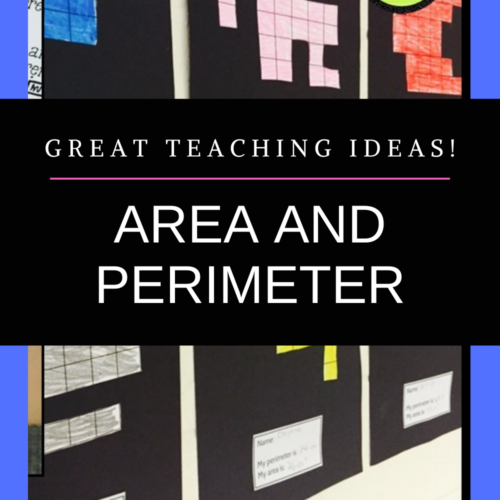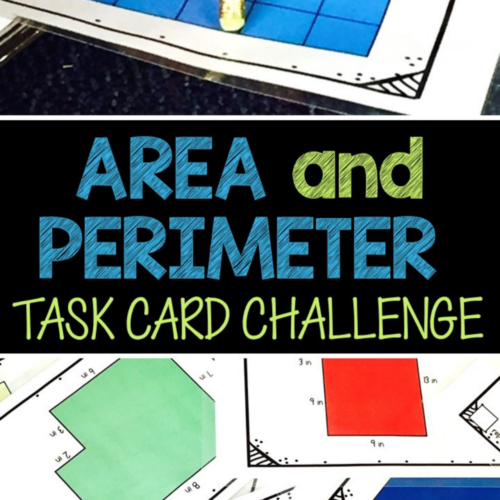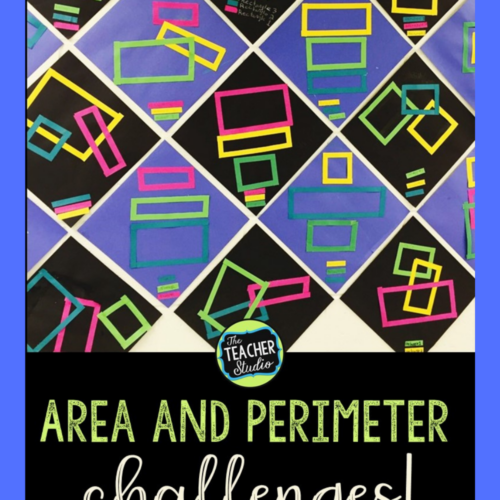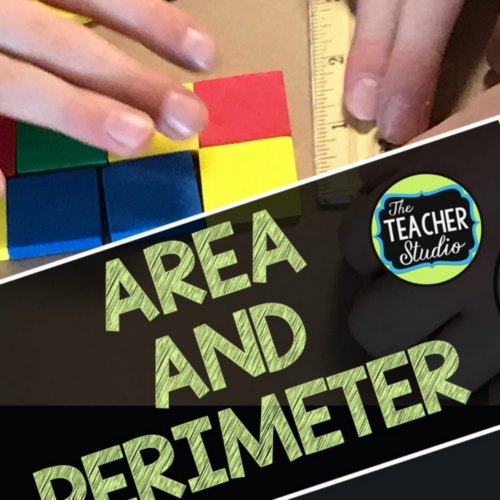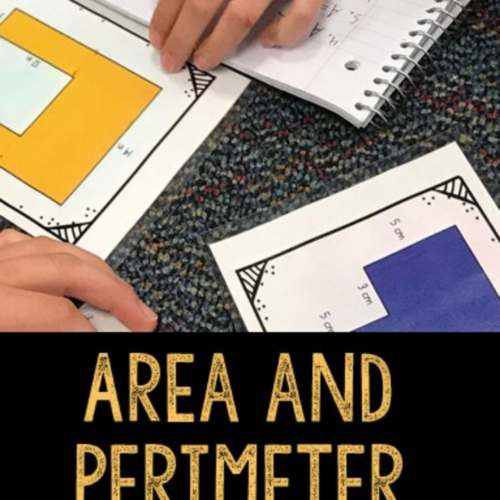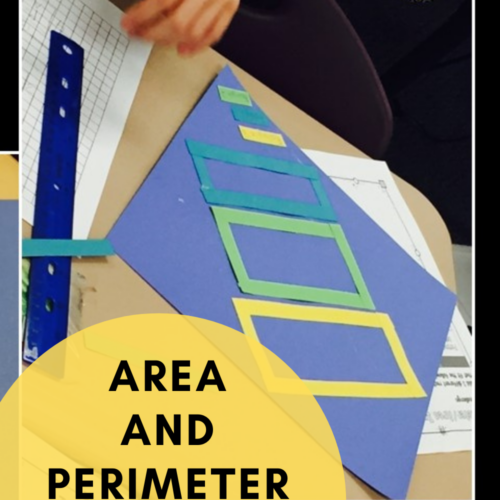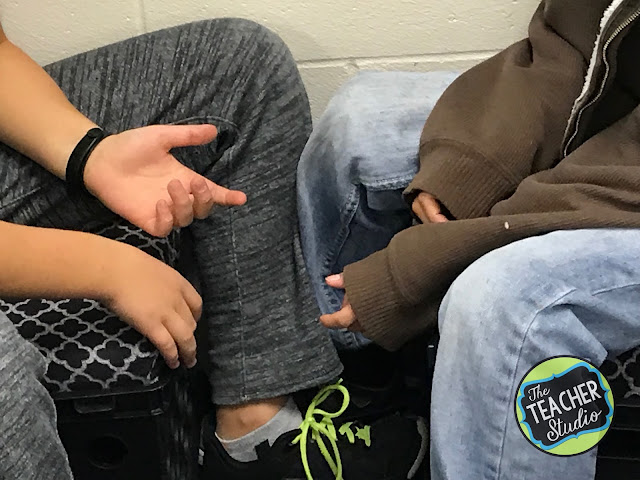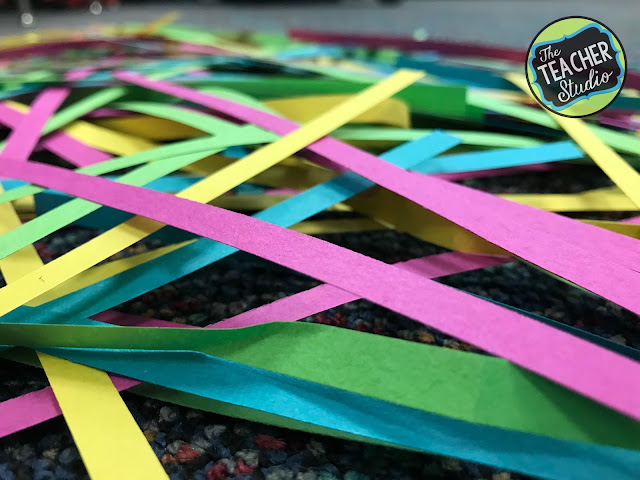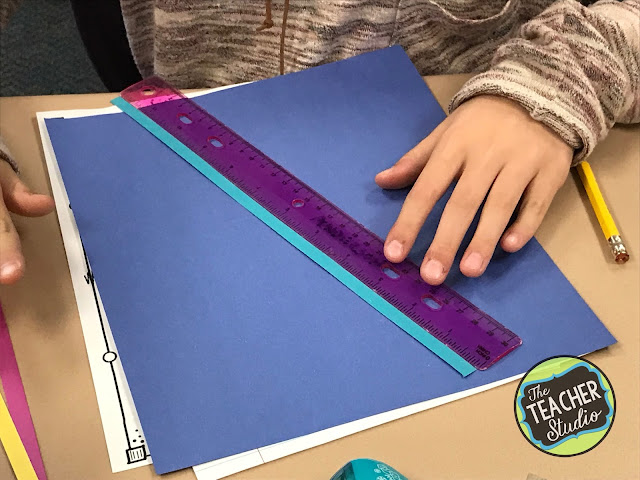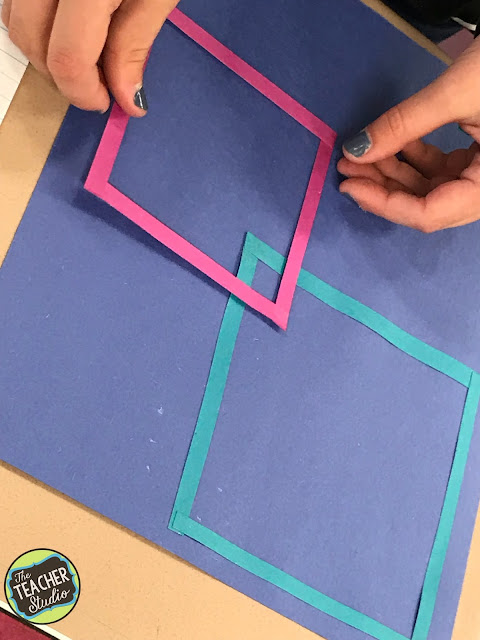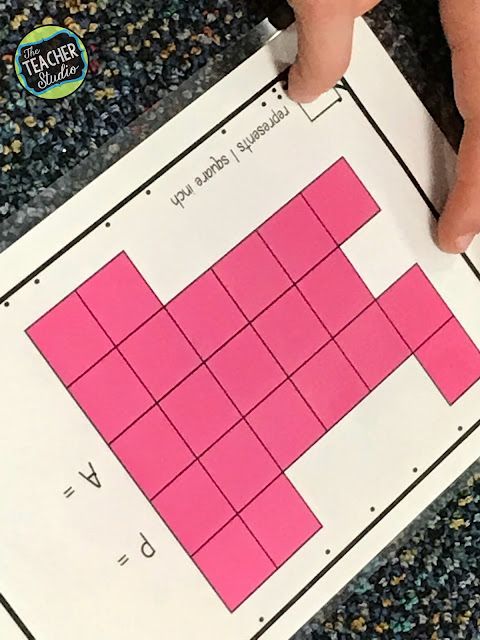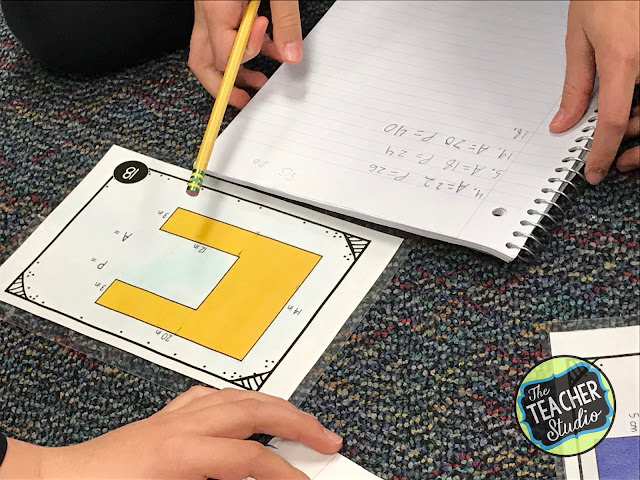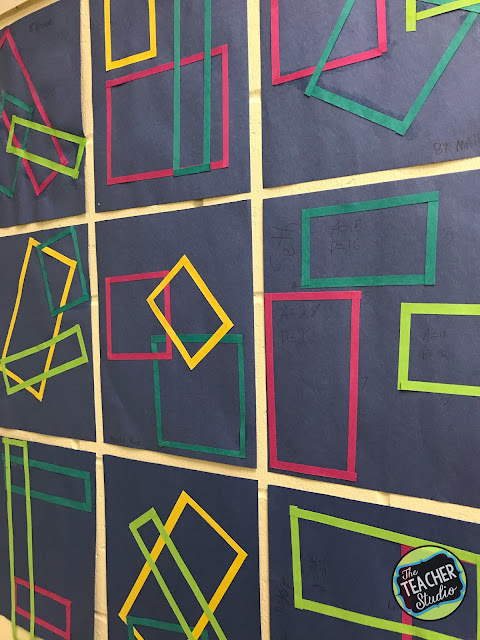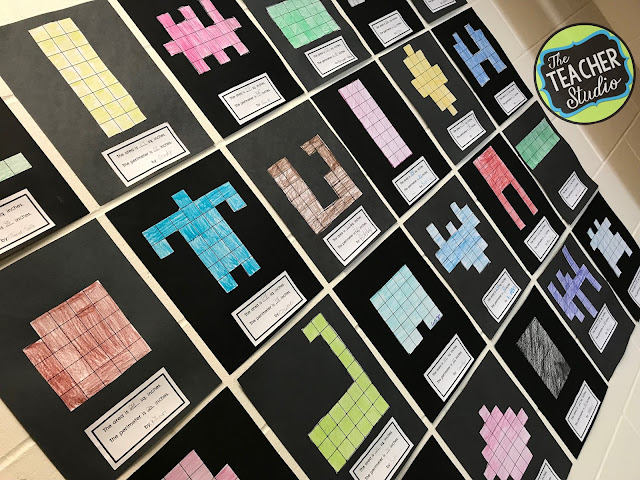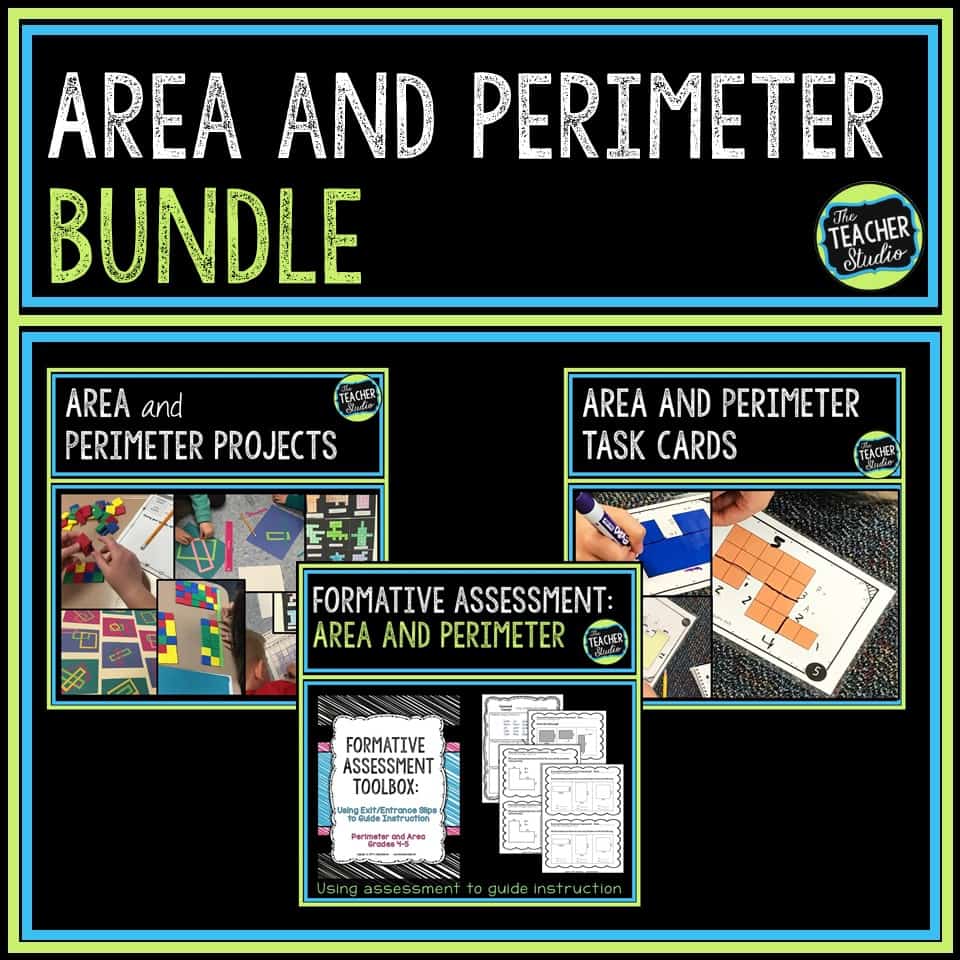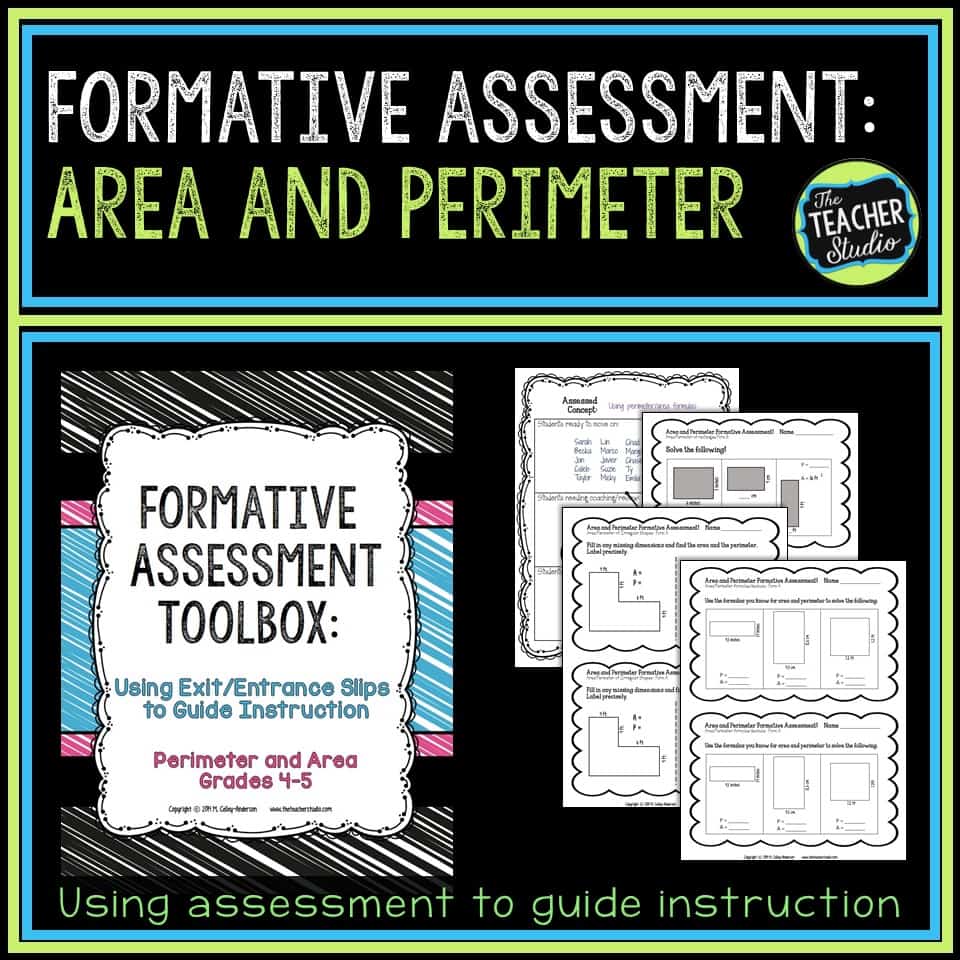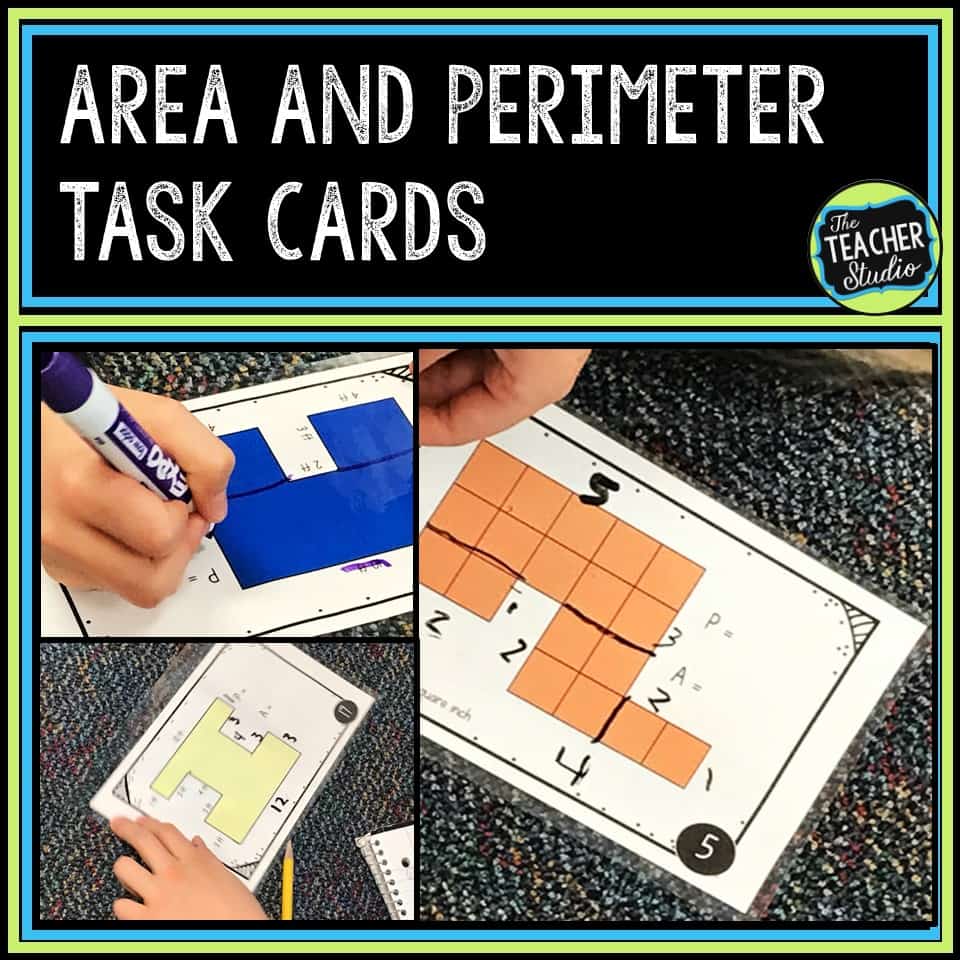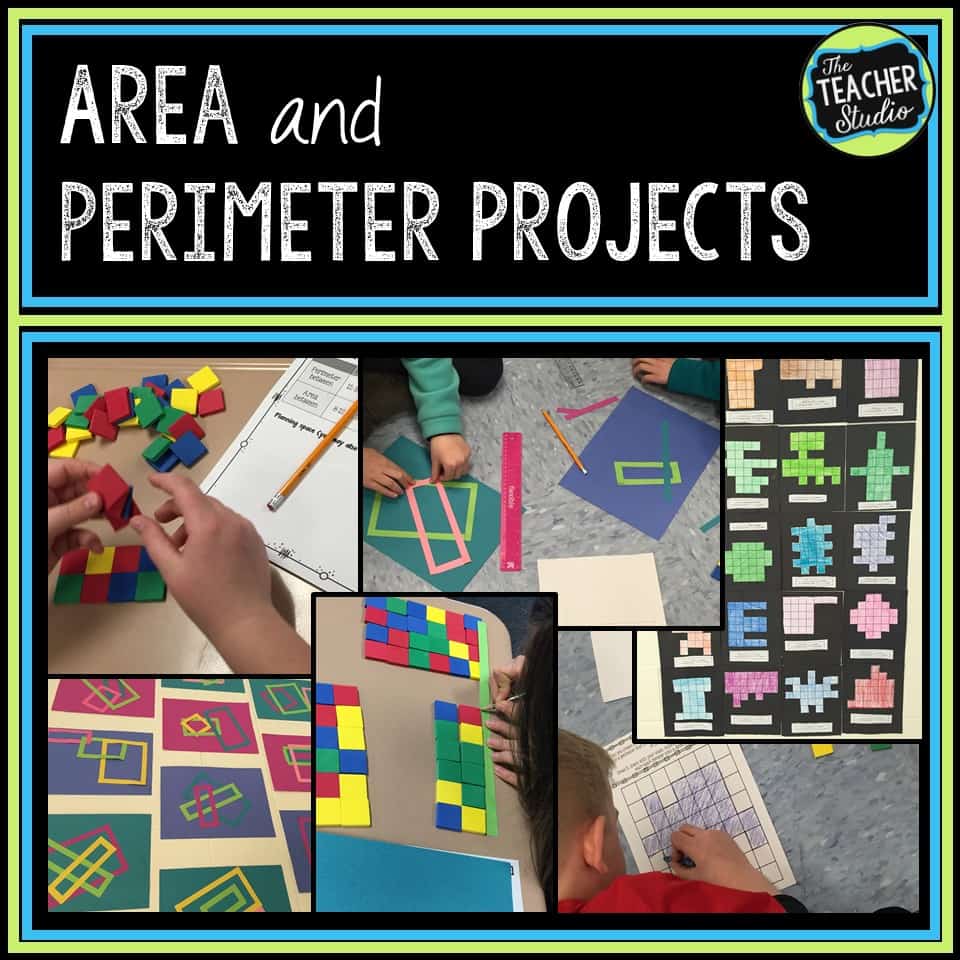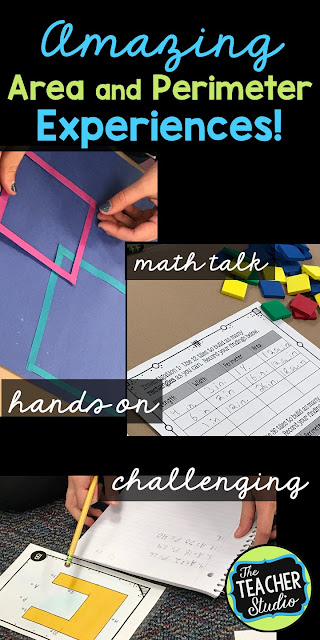Research shows that students learn best when they are collaborating and talking about math. My 25+ years in the classroom tells me that this is, indeed, true–but I’ll go a step farther and make the claim that math discourse can raise the level of engagement, motivation, and excitement as well. I thought I’d share some details about some recent area and perimeter work in my classroom to see if I can show you what I mean. The resources used in these photos are my Area and Perimeter Activities and my Area and Perimeter Task Cards.
Working in Pairs with Split Responsibilities
One of the first area and perimeter tasks I do is in pairs as I want to set the stage for a couple of things. One, during this unit we work almost ENTIRELY collaboratively. Two, I want students to realize the power of having a second set of eyes! We worked hard on this challenge and I gave each partner a different task–one was in charge of “building” the rectangles and one was in charge of recording.
I pulled my “recording” group to help them become experts on the difference between inches and square inches and told them they were responsible for making sure that correct language was used throughout the lesson. I pulled the “builders” to tell them that their job was to ASK their partner for suggestions and to then follow through. It was a ton of fun to walk around and eavesdrop as they worked to fulfill their jobs!
(Side note: I am often asked where I get these tiles. I use them for SO MANY things…they are foam and they are inexpensive and they are quiet! My affiliate link is below if you want to see them…)
The Challenge of Working in Larger Groups
Let’s be honest. Working in pairs is hard enough for elementary students. That being said, I DO like to occasionally push them to work with larger groups so we can have discussions about the challenges with it. For this area and perimeter challenge, students worked in teams of SIX (I know!). The rules? They had to follow the challenge (which involved designing a shape with an area of 24 square inches that would fit on a certain grid) AND no two members of the team could have the same perimeter. It meant they needed to talk. It meant they needed to ask questions. Finally, it meant they may need to give and take.
I gave them their grid paper to record their solution AFTER they had all worked together to make sure every member of the team met the challenge. It took some coaching to be sure…but we had a great discussion when we finished about the challenges of working in larger teams, the “give and take” needed to make sure everyone’s voice was heard, and so on. I don’t do it often–but this was a great forum to explore large group work!
Restating Directions to Improve Focus
Another way to get students talking about math is to ask them to restate directions before a task. Because so many of our area and perimeter projects had multiple steps, I would have partners take a minute to talk before we got started to make sure they understood the task, the expectations, and how to get started. It was great to be able to clarify these things BEFORE they started working! These students were talking about how to tackle the challenge shown in the next section.
Meeting Different Learning Styles
This project is one of my favorites. Much of the work I do with area and perimeter is very “hands on”, but this one, in particular, requires students to “build” rectangles–and then to create an artistic representation. Students who “see” math differently often are very successful at this–and the fact that they “build” rectangles by measuring side length and then assembling the rectangle really helps with cementing that concept of perimeter.
I also love how much dialogue happens among students…from giving feedback on solving the math challenge and clarifying the directions, to helping with the physical formation of the rectangles. It is definitely a collaborative effort–and I love watching how these activities engage them. It really frees me up to TEACH and coach as they work.
Task Cards, Proving Thinking, and More
As our studies of area and perimeter moved forward, it was time to use my
area and perimeter task cards to see if students were really internalizing the math. Again, we started with partners working and talking about the math–but I let them choose their level of challenge. These task cards have some rectangular shape…some with the squares visible…some “open” shapes…and some irregular shapes for students to try their hand at dividing into workable rectangles. The discussion was AMAZING and we then came together to talk about some of the strategies students used. When it was time to assess, I simply started pulling some of my
area and perimeter exit slips to see what students could do independently–and I gave a different slip at the start of each class time for about 5 days. This really helped me know who to focus my teaching time on.
Displaying Math Work to Build Pride and Discussion
I think it goes without saying that when students see their work displayed, it shows that we value what they have done. There is an added benefit as well–that students use it like a gallery walk…every time we walk by, they are pointing out things they notice or explaining why they did things a certain way. And another thing? Students from OTHER classes are looking as well! It’s one reason I like to hang a sign up by the work explaining what the challenge was so that other students can see what we did–and can work to make sense of the task as well.
I hope you see how providing students with opportunities to TALK about math can lead to some amazing things! Find these great resources by clicking on the images below. (I’ve even bundled them all for a great deal!)
Want to pin this for later?
